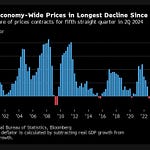
TL;DR: NIMBY groups are cock-a-hoop this morning, calling on councils and the Government to completely abandon the MDRS housing densification rules in the wake of National’s backflip on a bipartisan deal once seen as the hope of a generation.
The residents’ groups also called (in reports in The Press-$$$ and The NZ Herald this morning) for a halt to greenfields housing developments in our two biggest cities as well, saying there was plenty of land already zoned for housing. See more detail below.
News elsewhere from Aotearoa’s political economy on climate, housing and poverty:
Hundreds of Nepali migrants who paid agents for work visas and jobs here are now living and working like slaves in Aotearoa, Lincoln Tan reports for The NZ Herald;
Despite talk of recession and incomes not keeping up with inflation, Stats NZ reports Aotearoa’s economy created 13,193 jobs in April and grew gross earnings at an annual rate of 8.96%, well ahead of CPI inflation at 6.7%;
Tiwai Point is set to keep turning 13% of Aotearoa’s renewable power into 660,000 tonnes of carbon emissions each year for another 15 years, Marc Daalder reports for Newsroom;
A Wellington City Council review has found another 25 Loafers Lodge-style high-density boarding houses operating in the city, including four without building warrants of fitness Stuff; and
National’s Chris Bishop had to pull Transport Spokesman Simeon Brown back into line after Brown suggested National was opposed to bilingual road signs. Biship said National approved the bilingual signs in principle. NZ Herald
Usually, I put in a paywall for paying subscribers at this point in the email newsletter and lock off the podcast above from free subscribers. But I want to experiment until the end of June with publishing everything to everyone immediately to see what happens with subscription rates, revenues and email opening rates. I want to thank paying subscribers in advance, who are still the only ones able to comment and get access to our very active chat section and webinars. Join our community by subscribing in full to support my journalism in the public interest about housing (un)affordability, climate change (in)action and poverty (not enough) reduction.
NIMBYs want MDRS dumped and greenfields' stopped too
Anti-densification residents’ and ratepayers’ groups in Auckland and Christchurch are cock-a-hoop over National’s partial backflip on MDRS over the weekend and have ramped up their campaigns to stop densification in their areas, and also to stop new housing developments on the fringes, which they believe they’ll have to subsidise.
Christchurch’s Combined Residents’ Associations (CRA) called yesterday on the Labour Government to ditch its stance on housing intensification and for the city to halt work on new rules until after the general election, Liz McDonald reported in The Press-$$$ this morning.
It also called for an end to re-zoning of farmland into ‘greenfields’ residential areas on the fringes of Christchurch and challenged National’s retention of support for six-storey buildings on rapid-transit routes in this statement (my bolding):
“CRA still has significant concerns about allowing developers to build six storey apartment buildings along transport corridors and around shopping centres, unless it can be proven those heights are needed to meet housing demand, and it is done in accordance with already-established council controls.
“It also wants councils to ensure greenfield development is not approved on highly productive rural land.” Combined Residents’ Associations (CRA) Christchurch statement.
The CRA went on to call for the full demolition of MDRS, given the bipartisanship was over, and a suspension of Christchurch’s ongoing District Plan rewrite for MDRS:
“CRA now suggests the Independent Hearings Panel process in Christchurch be immediately set to pause, to avoid wasting more ratepayers’ money on a process that is now deeply uncertain.”
“The government has already indicated a desire to “tweak” the legislation in response to National’s proposal, so there will inevitably be some changes after the election, whatever the outcome.” CRA
Auckland NIMBYs celebrate and push for more too
Auckland’s Character Coalition called for a complete rethink of the MDRS legislation and also opposed new greenfields developments, Bernard Orsman reported this morning in The NZ Herald
Coalition spokesperson Sally Hughes wrote she was pleased the bi-partisan political support for MDRS had evaporated, and said the alternative greenfield developments backed by National were ‘problematic’ too. Here’s more from her statement (bolding mine):
“It’s not a binary issue. It’s not a choice between either intensive housing or sprawling housing. We need more affordable housing and more of it. Character Coalition has always acknowledged that, but greenfield development brings challenges too; with poor transport choices and infrastructure deficits that are already constraining Auckland. The Coalition’s position is that it’s possible to preserve both character and heritage and intensify the city.
“Auckland’s Unitary Plan allowed for planned intensification with an identified 900,000 sites across Auckland allowing for population growth for the next 30 years.” Character Coalition spokesperson Sally Hughes statement
YIMBYs despondent as bi-partisan hope dissolves
A City for People, a coalition of Gen Zero, Greater AKL and Coalition for More Homes that has called for more climate-friendly and affordable housing through densification, wrote via Twitter that National should re-commit to the bipartisan deal, although Labour has also sent National a letter saying it was willing to work on tweaks.
Here’s the statement in full. I could bold all of it, but…you get the picture.
“National and Labour’s bipartisan support for making it easier to build more homes was an inspiring moment of political unity. We are deeply disappointed by National Leader Christopher Luxon’s indications that he no longer supports this transformational policy.
“Allowing councils to opt-out of building enough homes is a slap in the face for anyone who wants affordable housing or cares about the environment. Young people should rightly despair for their future if this backdown is the new direction for housing policy in New Zealand
“National's alternative is the status quo: greenfields. The cities in Aotearoa will continue to sprawl outwards. House prices and rents will continue to sky-rocket, locking our young people out of secure housing futures, and pushing more and more vulnerable people into poverty
“More sprawl will force people to be dependent on their cars, spending hours a day stuck in traffic. His vision means more congestion and more carbon emissions – it will become impossible for us to meet our zero-carbon commitments.
“The MDRS are already subject to sensible carve outs - light planes, open space, privacy, and exemptions for sea level rise, flooding and colonial characters. Councils are already are trying to take these too far - they don't need more control.
“Backing down on this policy is bad for the political culture in Aotearoa. We all like seeing the politicians we elected come together and collaborate constructively to build a better future for all of us. We don't like seeing them turn our futures into a political football.” A City for People statement.
So what happens now?
In my view, the debate over densification is now at risk of ‘going nuclear’ and into full ‘culture war’ mode during the election campaign, depending on how Luxon, Housing Spokesman Chris Bishop, Deputy Leader Nicola Willis and Transport Spokesman Simeon Brown decide to deal with it, and assuming they’ve thought about and are operating with some sort of coherent stategy and plan. My fear is they aren’t.
Brown has already nudged into culture war territory with his comments on cycling and a ‘war on cars’ by urban activists. See more below on this. It depends just how much Luxon wants National to appeal to younger voters nearer the centre, or how many votes he thinks can be switched with an appeal to suburban conservatives railing against ‘daylight robbery’, ‘living in hutches’ and ‘too many cars for too few roadside carparks’.
My view so far is Luxon appears not able to pivot back to the centre and do the sort of surprise bipartisan deal that then-National-leader (and Luxon mentor) John Key did before the 2008 election with then Labour PM Helen Clark over anti-smacking legislation. Key was able to stare down the social conservatives in his caucus and win the attention of ‘netball mum’ median voters in the big cities with his surprise stance.
So far, Luxon has done little to rebuke or shut down the more extreme views on social, transport and environmental issues from the likes of Simeon Brown, Chris Penk, Simon O’Connor, Judith Collins, Harete Hipango and Maureen Pugh.
Elsewhere in more detail in our political economy
Bishop forced to pull Brown back on bilingual road signs
National Leader Christopher Luxon continues to struggle to keep National aimed at the centre. Last night Chris Bishop had to pull Transport Spokesman Simeon Brown back into line after Brown suggested on Friday in a meeting with National supporters in Tauranga that the party was opposed to bilingual road signs.
Here’s Brown quoted by the Bay of Plenty Times from last Friday:
“We all speak English, they should all be English” when asked was asked his opinion on Waka Kotahi NZ Transport Agency’s proposal to introduce bilingual signs.
“My view is it will make signs more confusing,” he said, telling the transport agency to just “do your job”.
Labour PM Chris Hipkins accused National of dog-whistling to a racist base with the stance in his post-Cabinet news conference yesterday.
“The current leader of the National Party tried to trademark “kia ora”. So I’m not entirely sure where they’re going with that unless it’s just an outright dog whistle.” Hipkins at his post-cabinet news conference yesterday. Transcript.
Shortly after, Bishop told reporters National approved the bilingual signs in principle.
“If they want to have bilingual road signs with te reo and English on them, that’s fine. But we just don’t think it’s a particularly good use of resources right now.”
He said, however, it was “very important” that English was “extremely prominent”.
“Because that’s what the vast bulk of New Zealanders understand. So we’ve got no issue with bilingualism, but we just don’t think it should be the priority for the Transport Agency right now.” Bishop via NZ Herald
In my view, Brown's culture war-ish stance on the 'war on roads' in Transport is dangerous for Luxon and National. It may win votes from ACT, but plays into Labour's hands, who want to paint National as Brash-like extremists who can't be trusted in power.
FYI, here’s more from Simon Wilson via NZ Herald-$$$ on this:
Elections are won and lost in the middle, according to conventional wisdom. This one is being fought for the hearts and minds of voters who swung to National under John Key and then swung to Labour under Jacinda Ardern in 2020.
Those voters are not angry about uppity Māori. On the contrary, they’re likely to be not just “familiar” with te reo, but pleased about its expanding use. Ruby Tui gave powerful voice to that sentiment when she sang Tutira Mai at the Rugby World Cup.
Tui is a much-loved national hero and it was a thrilling moment, not just because she did it, but because an enormous proportion of the crowd clearly knew and loved the song.
How did that happen? Because in middle New Zealand, kids of all races and ethnicities learn waiata and haka at school, and the tikanga that underpins them, and bring home a degree of cultural competence that’s vastly different from their grandparents’. And their parents are likely to be good with that.
In this “middle”, the use of Māori greetings and placenames is a welcome component of the TV news and widespread in daily use. We have a local language that’s English inflected with te reo, and it’s a living language, evolving all the time. We’re good with that too.
We’re not likely to get freaked out by a marae visit, because whether through school, work, a sports club or in some other context, we’ve done it and learned from it and loved it.
National understands all this. At least, it did under Key and Bill English. Co-governance arrangements were created in a range of situations and, according to Te Arawhiti, the Ministry of Māori Crown Relations, their Government passed into law 46 Treaty settlements, worth almost $1.24 billion. It’s an impressive achievement.
Because of all this, the Key/Ardern voters of middle New Zealand are likely to be repelled by the racism that has emerged on the right. Back on Track? Not if it’s a dog whistle to grumpy voters sick of having to accommodate Māori in their lives.
Which brings us to Luxon’s dilemma. He can’t win both these audiences at the same time, because appeasing either one horrifies the other. Simon Wilson via NZ Herald-$$$
Generating hydro-electric power to produce carbon
Those thinking the massive chunk of renewable power produced at Manapouri (12% of Aotearoa’s total output) and used to smelt aluminium and emit 660,000 tonnes of carbon per year might be available to help our transition to renewable power any time soon should think again.
The Tiwai Point Smelter, which buys electricity from the state-controlled Meridian Energy at 3.5c per kilowatt hour while residential consumers pay about 19c per kilowatt hour, looks set to stay open until 2039, Marc Daalder reported yesterday via Newsroom Pro-$$$. It’s now open to all on Newsroom.
Marc cited a letter from the Rio Tinto-controlled NZAS to ministers in November that he obtained under the OIA saying the smelter thought it could sign a multi-provider power deal until 2039. It's actively in those talks now.
"NZAS [New Zealand's Aluminium Smelter] believes there is sufficient volume across generators' portfolios to develop a long-term, multi-supplier power agreement framework that will enable us to operate through to 2039," the smelter wrote.
BusinessDesk-$$$’s Brent Melville also has a useful piece on the negotiations, including that they’re complex and not assured of success.
Rio Tinto is arguing its aluminium production produces a sixth of the carbon emissions of its many of its global rivals at two tonnes of emissions for each tonne of aluminium produced. It is also angling for a NZ Steel-style chunk of climate fund money from the Government.
The thought of the Government paying Rio Tinto anything like the $140 million it paid to NZ Steel to keep producing aluminium and carbon emissions that represent about 10% of Aotearoa’s likely shortfall of the Paris Agreement would be galling for a few Green Party members…
More detail on Wellington’s housing crisis
It turns out the Loafers Lodge awfulness in Wellington is just the tip of the iceberg. Wellington City Council has identified 25 high density accommodation providers similar to Loafers Lodge, of which four don't have building warrant of fitnesses, Gianina Schwanecke and Tom Hunt report this morning for Stuff.
The review ordered by Mayor Tory Whanau found one of the four lodges is not required to have a building warrant of fitness and the council is waiting on information from the other three building owners.
Ka kite ano
Bernard
PS: I’m sending an early cut of this news analysis directly to paying subscribers who are signed in via the Sutbstack App and Substack’s website from around 6.30 am. We have a great chat over there every day. Here’s a sample:













Share this post